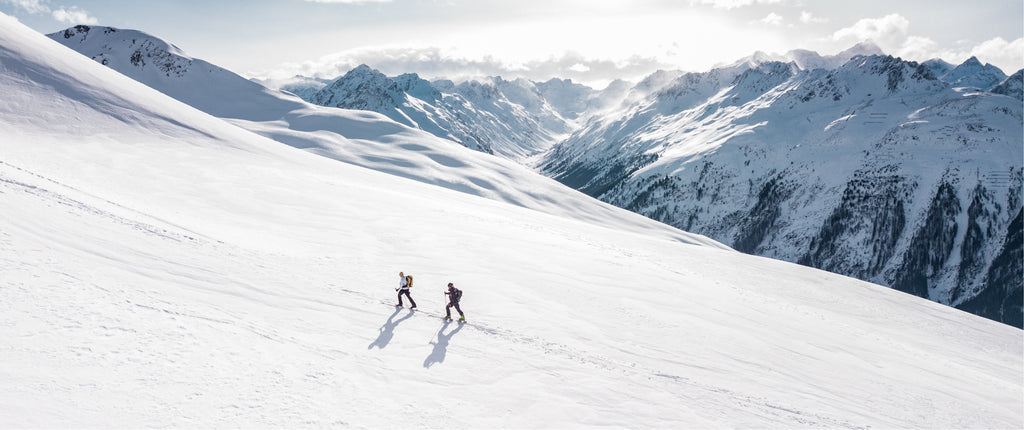Table of Contents
- Introduction
- The Basics of Single Origin Coffee
- The Importance of Traceability and Transparency
- Exploring the Regions of Single Origin Coffee
- The Influence of Terroir on Coffee Flavor
- Conclusion
- FAQ
Introduction
Have you ever taken a sip of coffee and wondered about the journey it took to reach your cup? While it may seem straightforward, the world of coffee is intricate, filled with diverse flavors, origins, and stories. Single origin coffee has surged in popularity among enthusiasts and casual drinkers alike, but what exactly does "single origin" mean, and where does this unique coffee come from?
At BUBS Naturals, we believe in the power of transparency and quality—principles that resonate deeply with single origin coffee. Our commitment to clean, functional, and science-backed supplements reflects the same dedication to knowing where our ingredients come from. In this blog post, we’ll explore the origins of single origin coffee, delve into what makes it unique, and explain how it can enhance your coffee experience.
By the end of this article, you will have a comprehensive understanding of single origin coffee, including its significance in the coffee world, the regions it comes from, and how it differs from blended coffees. We’ll also highlight the connection between single origin sourcing and sustainable practices, enriching both the environment and the farmers who cultivate these beloved beans.
Let’s embark on this flavorful journey together, discovering the roots of single origin coffee and why it might just be the perfect choice for your next brew.
The Basics of Single Origin Coffee
What is Single Origin Coffee?
Single origin coffee is defined as coffee sourced from a specific region, farm, or producer. Unlike blended coffees, which combine beans from various locations, single origin coffee offers a unique flavor profile that reflects the specific conditions in which it was grown. This includes factors such as climate, soil composition, altitude, and processing methods.
The term can refer to:
- Single Farm: Coffee sourced from one particular farm.
- Single Region: Coffee from a distinct geographical area, often linked by similar climate and agricultural practices.
- Single Producer: Coffee from a specific farmer who often oversees all aspects of the cultivation and processing.
The beauty of single origin coffee lies in its traceability and the story behind each cup. For instance, when you drink a cup of our BUBS Brew Coffee, you’re not just enjoying a beverage; you’re experiencing the unique flavors that come from its specific origins.
Availability of Single Origin Coffee vs. Blend Coffee
One of the primary differences between single origin coffees and blends is their availability. Single origin coffees are often seasonal and limited in quantity, meaning they are available only during certain times of the year when the beans are at their peak flavor. This exclusivity adds to their allure, as each season brings new flavors and experiences.
In contrast, blended coffees are typically available year-round. They combine beans from various origins to create a consistent flavor profile that is less susceptible to seasonal variations. This means that while blends can offer a balanced taste, they may lack the distinctiveness found in single origin varieties.
How Does Single Origin Coffee Taste?
Single origin coffees are celebrated for their unique and complex flavors. Because these coffees come from a specific location, they carry distinct characteristics influenced by their environment. For example:
- Ethiopian Coffee: Often has floral and fruity notes, reflecting the region's diverse climate.
- Colombian Coffee: Known for its smooth, well-balanced profile with hints of chocolate and caramel.
- Sumatra Coffee: Typically features earthy and spicy flavors due to its unique processing methods.
The flavor of single origin coffee can vary dramatically from one region to another, making each cup a new adventure. When we savor a cup of single origin coffee, we're not just tasting the beans; we're engaging with the land, the farmers, and the dedication that goes into each harvest.
The Importance of Traceability and Transparency
In today’s coffee market, consumers are increasingly seeking transparency about the origins of their products. Single origin coffee provides a level of traceability that blends cannot match. Knowing where your coffee comes from and who produced it fosters a deeper connection to the beverage we cherish.
Ethical Sourcing Practices
Supporting single origin coffee means supporting ethical sourcing practices. When we choose single origin, we often encourage farmers to adopt sustainable practices that benefit both the environment and their communities. By ensuring fair prices for high-quality beans, we empower farmers to reinvest in their operations and improve their livelihoods.
At BUBS Naturals, we are proud to mirror this ethos in our own business model. We donate 10% of all profits to veteran-focused charities, ensuring that our commitment to wellness extends beyond just our products. Just as we support our veterans, choosing single origin coffee supports the farmers and communities that cultivate these incredible beans.
Exploring the Regions of Single Origin Coffee
Understanding where single origin coffee comes from involves exploring various regions renowned for their distinctive coffee profiles. Let’s dive into some of the most famous coffee-producing regions around the world:
1. Central and South America
-
Colombia: Known for its smooth and balanced coffee, Colombian beans often have chocolate and caramel notes. The country's diverse climate and rich volcanic soil contribute to the high quality of its coffee.
-
Costa Rica: Renowned for its Arabica beans, Costa Rican coffee is often bright and fruity, with a refreshing acidity. The country places a strong emphasis on sustainability and quality, making it a favorite among coffee lovers.
-
Guatemala: This region produces coffee with rich flavors and full body. Guatemalan coffees often feature notes of chocolate and spice, with a unique sweetness derived from the high altitude at which they are grown.
2. Africa
-
Ethiopia: Considered the birthplace of coffee, Ethiopian beans are famous for their diverse and complex flavors. Ethiopian coffees often have floral and fruity notes, making them a favorite among specialty coffee drinkers.
-
Kenya: Known for its bright acidity and bold flavors, Kenyan coffee is often characterized by berry and citrus notes. The country’s unique growing conditions contribute to its distinct taste.
3. Asia and the Pacific
-
Sumatra, Indonesia: Known for its earthy and full-bodied flavors, Sumatran coffee often has herbal and spicy notes. The unique processing methods used in this region, such as wet hulling, contribute to its rich and complex profile.
-
Hawaii: Home to the famous Kona coffee, Hawaii's coffee beans are known for their smooth, rich flavor with nutty undertones. The unique volcanic soil and climate of the islands contribute to its distinct taste.
The Influence of Terroir on Coffee Flavor
Just like wine, coffee flavor is deeply influenced by its terroir—the environmental factors that affect a crop's phenotype. These include:
-
Soil Composition: The minerals and nutrients in the soil can significantly influence the taste of coffee beans.
-
Climate: Temperature, rainfall, and sunshine all play critical roles in how coffee plants grow and produce fruit.
-
Altitude: Coffee grown at higher elevations tends to have more complex flavors due to slower maturation and different growing conditions.
Understanding the terroir of single origin coffee allows us to appreciate the nuances and subtleties of each cup. Each sip is a journey through the environment where the coffee was grown, inviting us to explore the rich tapestry of flavors that the world of coffee has to offer.
Conclusion
As we’ve explored, single origin coffee is more than just a trendy label—it represents a commitment to quality, traceability, and ethical sourcing. Each cup tells a story of the land, the farmers, and the unique conditions that create its distinct flavor profile.
At BUBS Naturals, we embrace a similar philosophy in our products, ensuring that every ingredient is sourced with care and purpose. Whether you’re enjoying a cup of single origin coffee or fueling your adventures with our Collagen Peptides, you’re participating in a movement that values quality, sustainability, and community.
So, the next time you sip on your favorite single origin brew, take a moment to reflect on the journey it took to reach you. Savor the flavors and appreciate the hard work of those who made it possible. Let’s raise our cups to the rich world of single origin coffee and the stories that unfold with each delightful sip!
FAQ
Q1: What is the difference between single origin and blend coffee?
A1: Single origin coffee comes from a specific region, farm, or producer, offering unique flavors that reflect its origin. In contrast, blend coffee combines beans from multiple sources to create a consistent flavor profile.
Q2: Why is single origin coffee generally more expensive?
A2: Single origin coffee is often produced in smaller quantities and requires more precise farming and processing techniques, which can increase costs. Additionally, the emphasis on ethical sourcing can contribute to higher prices.
Q3: How can I identify single origin coffee?
A3: Single origin coffee is typically labeled with specific information about its source, including the farm or region. Look for detailed descriptions on packaging or ask your barista for information about the coffee's origin.
Q4: Are there health benefits associated with single origin coffee?
A4: Single origin coffee, like all coffee, contains antioxidants and can contribute to overall wellness as part of a balanced diet. However, it’s important to remember that individual responses to caffeine can vary.
Q5: How can I get started with single origin coffee?
A5: Start by exploring different single origin coffees from various regions to find your flavor preferences. Visit a local coffee shop or roaster that offers single origin options, and don’t hesitate to ask for recommendations!


